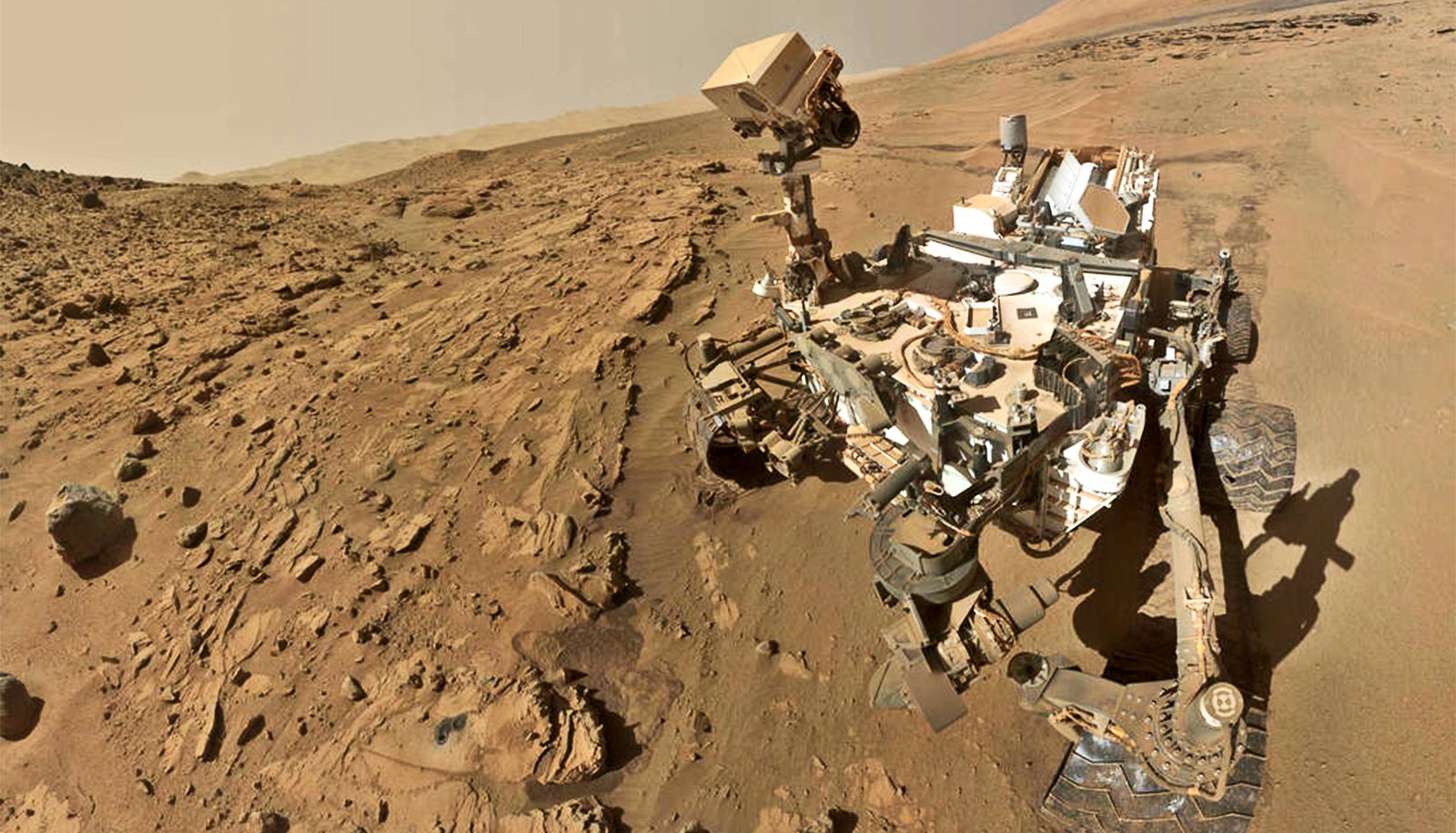New research sheds light on how methane moves around Mars.
Since methane was first detected in Mars’ atmosphere 20 years ago, scientists have struggled to uncover its origins and how it is transported.
Measurements from atmospheric samples collected by NASA’s Curiosity rover at Gale crater reveal fluctuations in methane levels over days and seasons, but why remains unclear.
These emissions, possibly produced by subsurface microbes, could provide vital evidence of life on Mars. However, pinpointing the timing and reasons for the variability has proven difficult.
Sampling strains Curiosity’s limited resources, so determining both why fluctuations occur and when to best capture samples is paramount.
According to a new study led by John Ortiz, an environmental engineering doctoral candidate at Johns Hopkins University, barometric pumping could be responsible for bringing gases from beneath the planet’s surface into its atmosphere at irregular but predictable intervals.
This natural mechanism could hold valuable information for the Curiosity mission, which is currently in its 11th year.
“Barometric pumping is a process in which variations in atmospheric pressure can push and pull gases from underground rock pores up to the surface,” says Ortiz of Johns Hopkins University’s environmental health and engineering department.
“Just like on Earth, daily atmospheric pressure changes on Mars are largely caused by heating from the sun—cooler air at night has higher pressure, warmer air during the day has lower pressure. The ground can essentially ‘breathe’ out gases like methane by pushing them up to the surface through fractures when atmospheric pressures are low, and pull them back underground when air pressure is high.”
For their investigation, the researchers used computer models to simulate how methane moves beneath the Martian surface, as well as how it mixes within the atmosphere. They then compared their simulated methane concentrations with the Curiosity rover’s measurements. Because Mars’ weather and atmospheric pressures are much less chaotic than Earth’s, the researchers were able to make predictions of atmospheric methane levels over time.
One significant finding of the researchers’ computer simulations was a “puff” of methane just before the Martian sunrise—information that could guide Curiosity as it performs a series of atmospheric sampling experiments as part of a current campaign to characterize methane fluctuations at Gale crater.
“Our work suggests several key time windows for Curiosity to collect data, each of which has the potential to tell us something different about methane circulation and transport processes. We think these offer the best chance of constraining the timing of methane fluctuations, and (hopefully) down the line bringing us closer to understanding where it comes from on Mars,” says Harihar Rajaram, a professor of environmental health and engineering at Johns Hopkins and Ortiz’s doctoral advisor.
The team’s results appear in the Journal of Geophysical Research: Planets.
Additional researchers from Johns Hopkins, Los Alamos National Laboratory, Purdue University, and The Freshwater Trust contributed to the work.
Source: Johns Hopkins University



